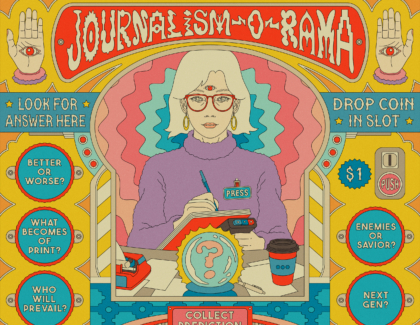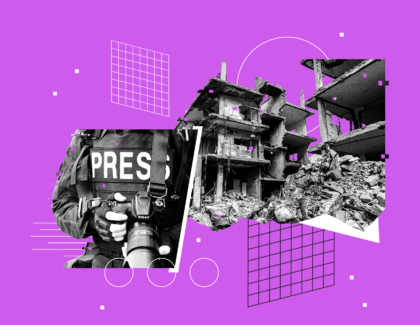Sign up for the daily CJR newsletter.
Sociolinguists are sociologists who study how people talk to one another. They are typically interested in naturally occurring speech, but unfortunately (for them) the preponderance of such communication disappears into the ether as it’s spoken. So where can the poor sociolinguist, who cannot be surreptitiously recording the couple at the next table at Starbucks, find caches of this naturally occurring stuff?
One place—slightly stagey and partially scripted but still having the requisite degree of interactivity and spontaneity—would be looking at the chitchat between local news anchors or the question/answer/follow-up-question sequences at presidential news conferences. The latter benefits from verbatim texts of these encounters that go back to the first Eisenhower administration, and that’s where Steven E. Clayman, Marc N. Elliott, John Heritage, and Megan K. Beckett began in researching “A Watershed in White House Journalism: Explaining the Post-1968 Rise of Aggressive Presidential News,” published in the August 2010 Political Communication. They perused the transcripts of 164 conferences (four each year) and examined 4,608 distinct questions journalists asked the presidents from 1953 through 2000.
In earlier work (discussed in this column in the May/June 2007 CJR), the authors found a growth from 1953 to 2000 in what they call “adversarialness” (in which the premise of the question indicates disagreement with something the president has said or done) and “accountability” (in which the question asks the president to justify something he has said or done).
In “A Watershed in White House Journalism,” the authors add two significant points. First, the increase is by no means gradual—there is a sharp upturn after 1968 and no return at any point thereafter to the more accommodating style of questioning in the 1950s and 1960s. Second, when the authors do a careful statistical analysis of competing hypotheses to explain this change, only one factor comes to the fore: the norms of journalism shifted after 1968.
The authors work their way through a broad range of possible explanations: increased contentiousness among Washington insiders; economic woes such as increased unemployment rates; partisan bias (perhaps the press was tougher on Republicans, who happened to have held the White House for most of the post-1968 era); the pull of Washington outsiders; the degree of professionalism in White House management of press relations; the idiosyncratic reaction of journalists to certain presidents (mutual friendliness with Kennedy, say, or mutual dislike with Nixon). But none of these hypotheses pan out.
Whether the economy is good or bad, whether the president is in a first or second term, or whether questions were foreign- or domestic-concentrated, the character of questioning shows no substantial fluctuation over time apart from the big post-1968 shift. Only the change in journalistic culture seems to matter—and, by the way, it matters globally. The American shift in the culture of questioning parallels trends at the same time toward less deferential, more critical “watchdog” reporting in Britain, Sweden, and elsewhere in the world.
The authors conclude that “the invigoration of journalism in the Vietnam/Watergate era” is the third moment in U.S. journalism history of a “major mutation” in news reporting. The earlier changes were the move in the 1830s toward a more news-centered (rather than commentary-centered) press and the rise in the early twentieth century of practices based on an ideal of “objective” news reporting.
If you are surprised that the end of the sixties saw the beginning of a substantial cultural revolution in (and beyond) the press, you must have missed every TV documentary on Woodstock, Watergate, the antiwar movement, the civil-rights movement, or the baby boomers. But how many times during the Reagan administration did journalists complain that their colleagues had already retreated from the watchdog press of the great days of Watergate? How frequently did we hear amid newspaper consolidations and mergers of the early 1990s that the increasingly corporatized press had squeezed the press dry of investigative vigor? Always there were supportive anecdotes, but scarcely ever were there metrics. Well, now there’s a metric, and a rather ingenious one at that.
Has America ever needed a media defender more than now? Help us by joining CJR today.






